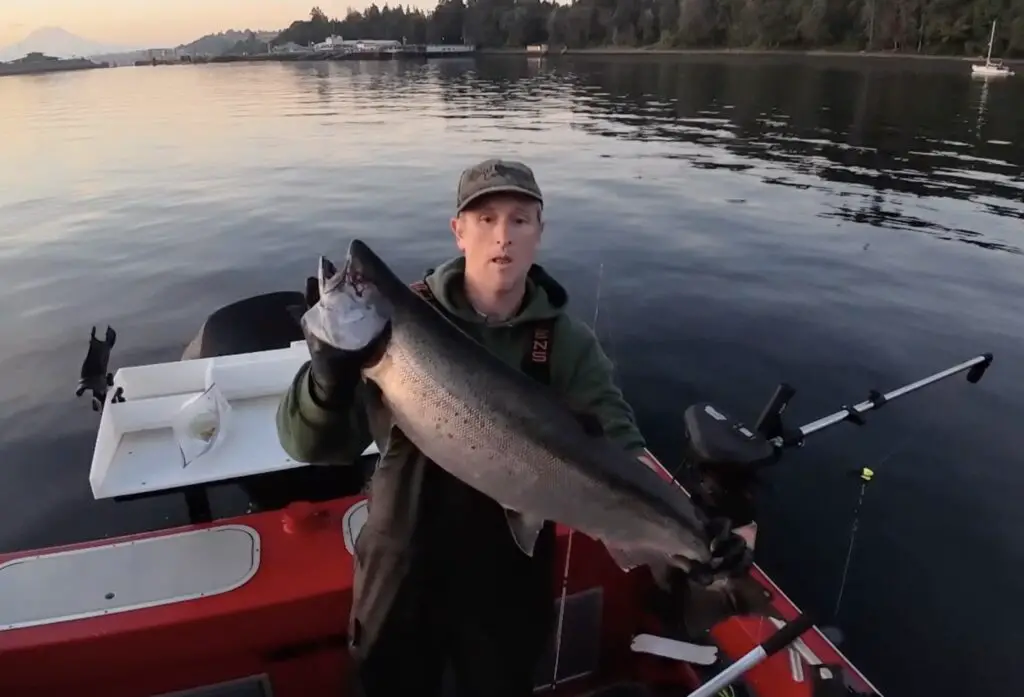
Can you already smell the sweet, foul(but not really) smell of a fresh chinook that just came on board your boat? It’s time to review the Chinook forecasts for 2025 for Puget Sound!
Where will the strongest run of chinook show up in Puget Sound in 2025? What will be the most constraining run that all our seasons will be impacted by? I bet it’s from a river that starts with an S! Keep reading to find out.
Let’s start with a look at the overall Puget Sound chinook forecasted return within a historical context before we break it down by sub area.
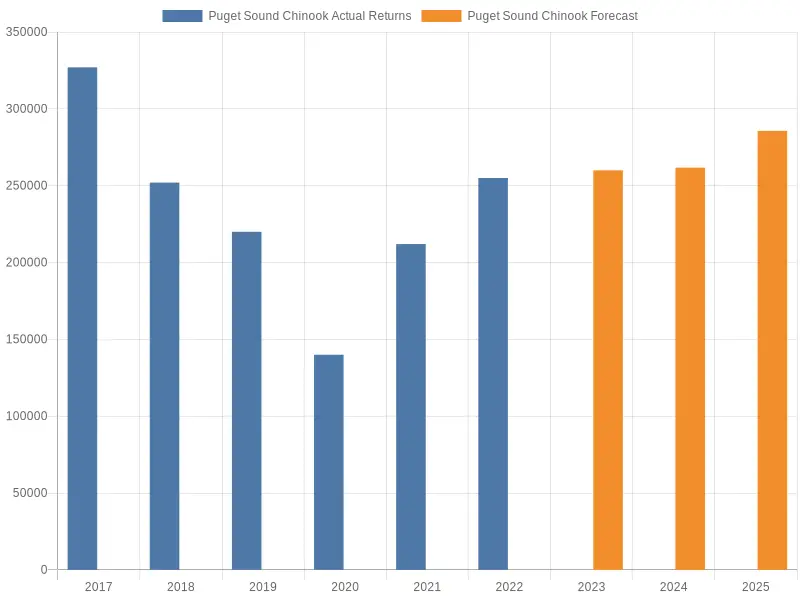
It’s pretty significant to me that the 2025 return of chinook salmon looks to be the 2nd best return of the past 9 years. While this is a great place to start breaking down a chinook forecast, all you pros know that what really matters is what’s happening underneath the hood. Let’s break it down by sub-area to find out.
2025 Straits and Hood Canal Chinook Forecast
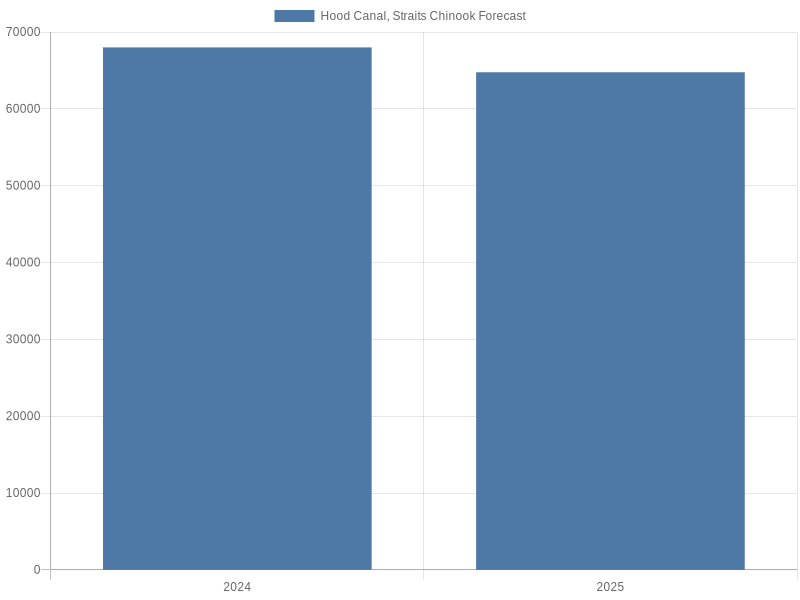
There’s nothing too exciting going on here. The Skokomish has slightly more fish returning, while Hoodsport has slightly less. The Straits Rivers are pretty flat year over year…These runs don’t contribute massively to Puget Sound fisheries except for places like Marine Areas 5,6, the western end of 9, and, of course, Hood Canal itself.
You can pretty much expect a repeat of 2024 abundance.
2025 North Puget Sound Chinook Forecast
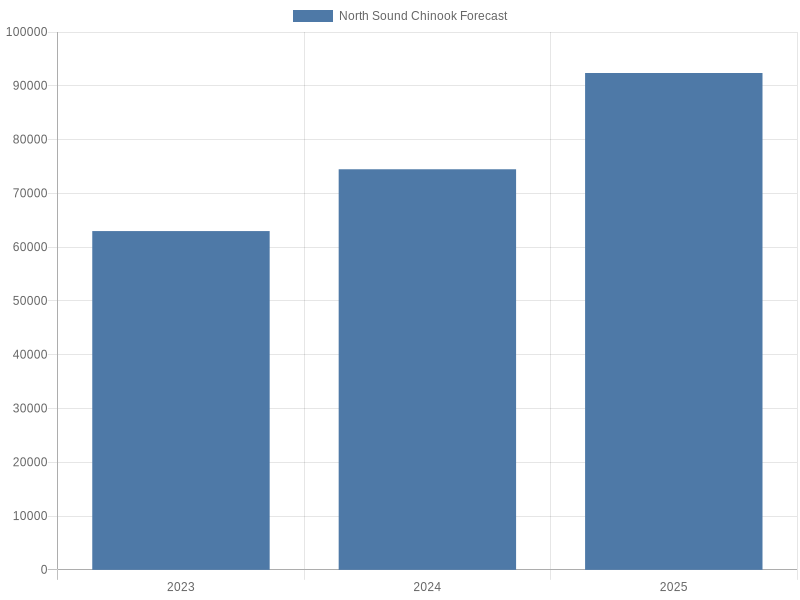
The above graph would ordinarily be exciting, but if there was one place I wasn’t looking for a big jump of chinook it would be the North Puget Sound. And that’s primarily because the seasons have been really difficult in places like Marine Area 7 due to constraining stocks which are factors again in 2025.
The department hasn’t publicly released the NALF run yet so I won’t post it here, but the Stillaguamish looks to be the most constrained stock again which shouldn’t be a surprise to anyone paying even half attention.
So where are all these extra chinook headed? The Samish, of course! We need to find a better way to access these fish beyond just the current Bellingham Bay fishery and freshwater side of the equation.
The Tulalip Bubble has about 1000 fewer fish returning. The Skykomish has about 2500 additional fish coming back. Fingers are crossed (and toes!) that we will get an opportunity to fish on that magnificent summer chinook fishery in 2025.
I will say this, it’s not dead on arrival the way it has been the past couple of years. There’s a chance!
I will have more detailed river-by-river breakdowns of the forecast on my river-specific pages soon.
2025 Mid Puget Sound Chinook Forecast
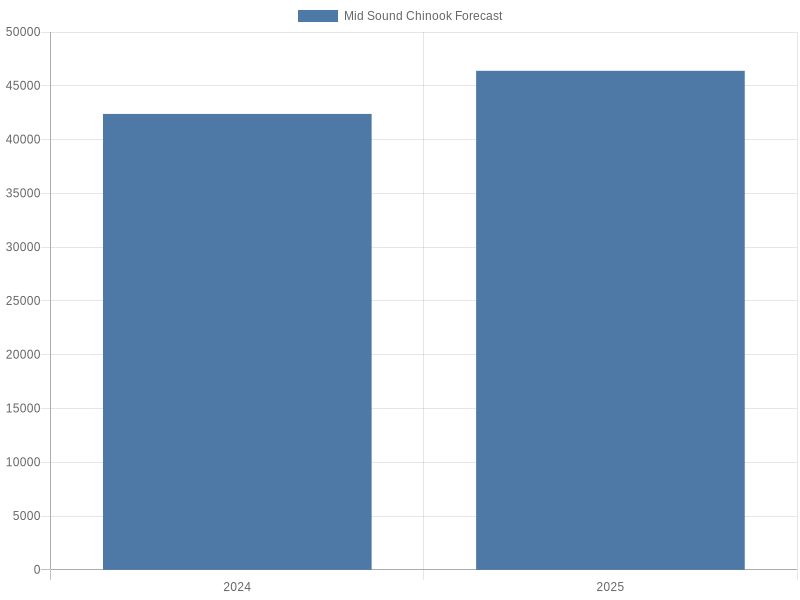
What’s going on in the mid-Puget Sound? This is basically everything from Lake Washington down to the Puyallup River. There are more smaller hatchery returns broken out by the Department this year so I only have 2 years of data to work with, but you can visually see that year-over-year we are flat to slightly better in 2025.
Lake Washington is probably the primary reason for that increase year-to-year, with a little bit of Gorst and Puyallup helping out. The Green is basically flat. We can’t complain, as the last few years of chinook fishing have been stellar in places like Marine Area 10 and 11 (except when we got closed prematurely!), so if we get a repeat of good seasons like in 2024, we are going to be pretty happy.
2025 South Puget Sound Chinook Forecast
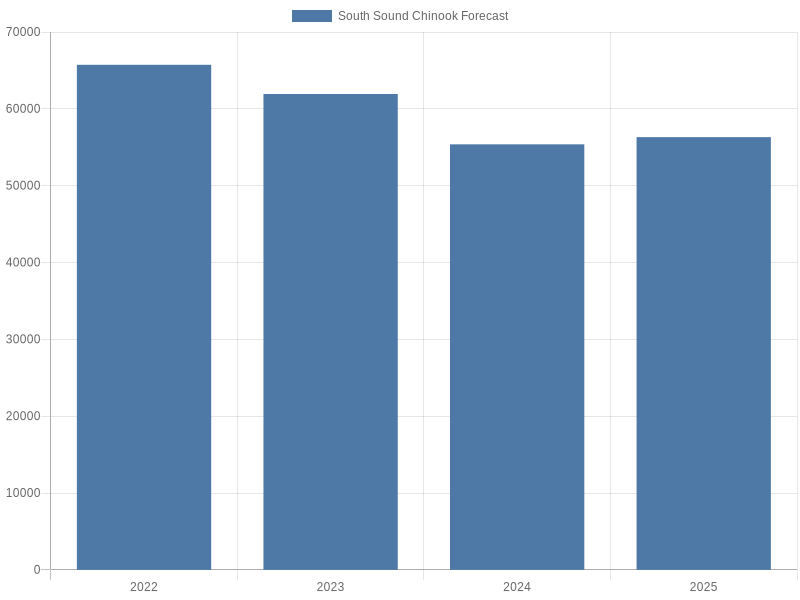
2025 looks to be slightly better than 2024 in the South Puget Sound, basically all the hatcheries south of the Narrows bridge.
Chambers, Minter, and the Deschutes are slightly up, while the Nisqually is down about 2000 fish to make us basically flat to slightly positive in 2025.
I would expect similar seasons in 2025 compared to 2024.
Wrapping up 2025 Chinook Forecasts for Puget Sound
If you haven’t already seen it, check out my write-up on the 2025 Coho forecast for Puget Sound and the Pink forecast here.
We are still early in the process on March 6th as of the writing of this blog post. We don’t yet have the ocean options from PFMC and often times that will impact some the constrained stocks in a negative way which can make season setting more challenging.
One of the factors this year that may be a little different is that coho looks to be a concern potentially on the coast and for sure within Puget Sound, and that may take some of the time on the water away from the ocean seasons or at least reduce the quotas a bit for some of the coastal marine areas.
If that happens, that will generally enable more impacts to be shifted to Puget Sound, so let’s see.
A lot of folks don’t realize it, but the ocean options have a sizable impact on our Puget Sound fisheries. While there’s very little impact from recreational anglers in Marine Areas 3 and 4, the quotas directly translate to the commercial fisheries that occur in Marine Area 4 and hammer on ESA-listed natural-origin Puget Sound chinook fishing non-selectively.
I did this analysis in 2024 and concluded that 48% of the impacts on ESA-listed natural-origin chinook came from marine non-selective fisheries. There’s even a non-treaty commercial fishery taking .45% of the ER ceiling on the Skykomish Summer Chinook! In some years, that’s more than the entire MA7 sport angler chinook season!
More on this topic soon.